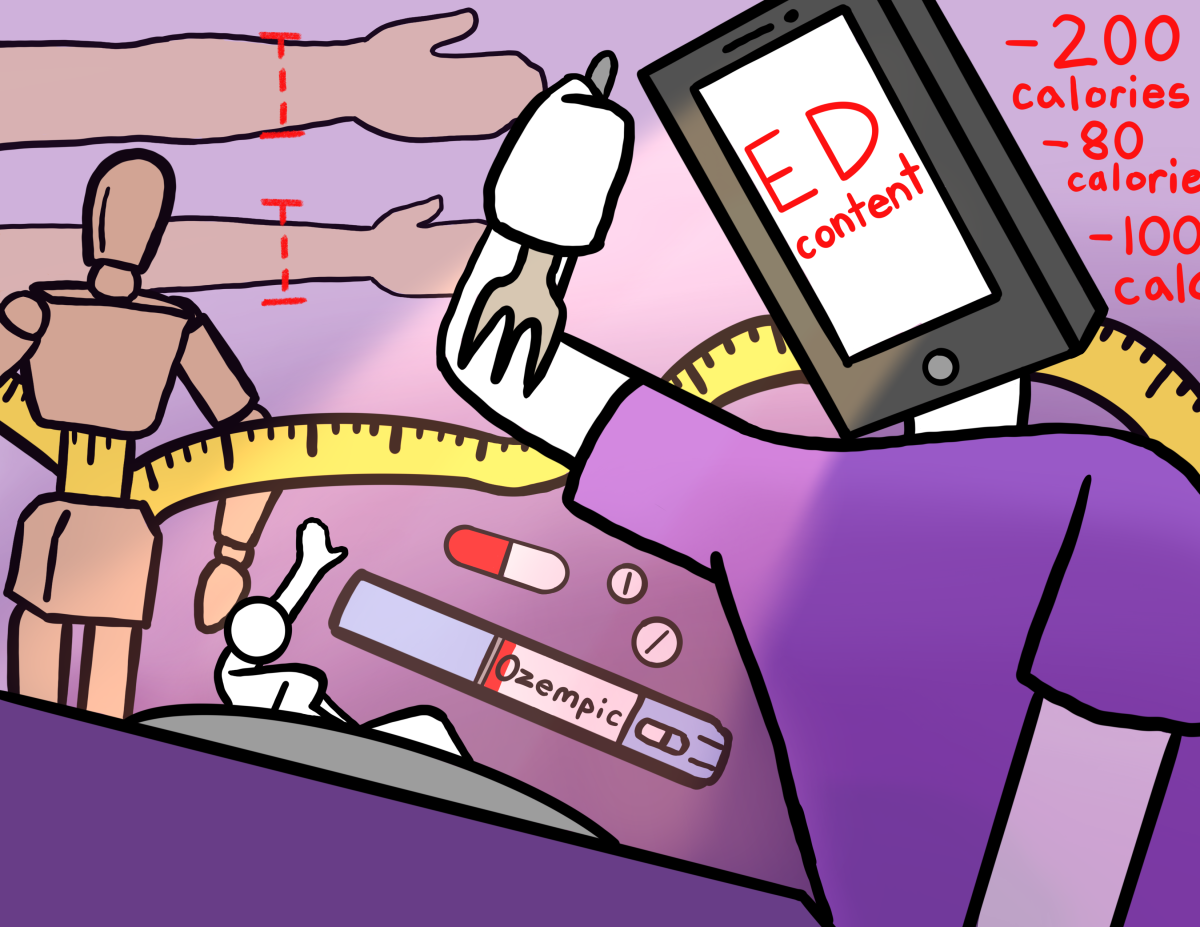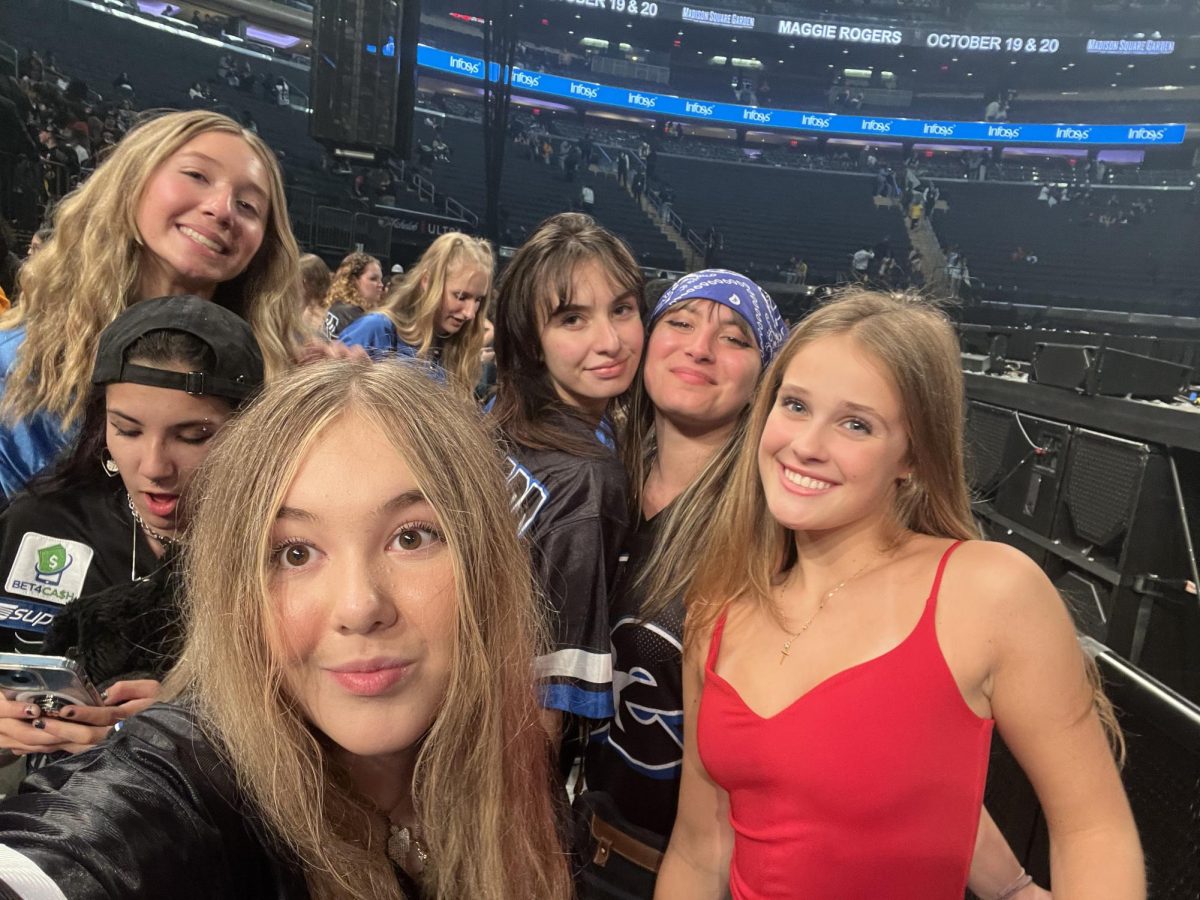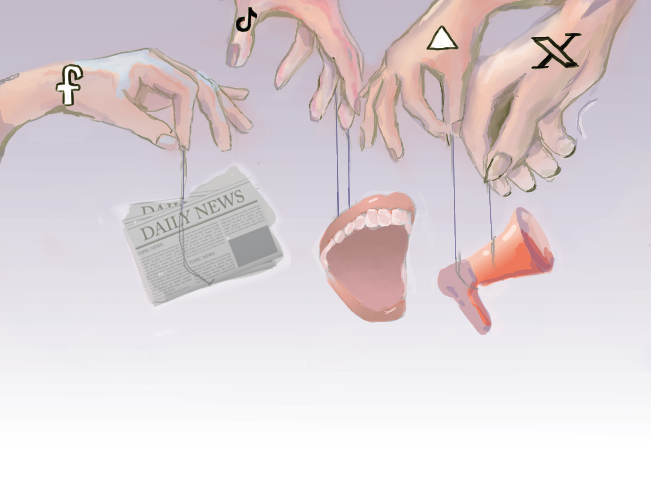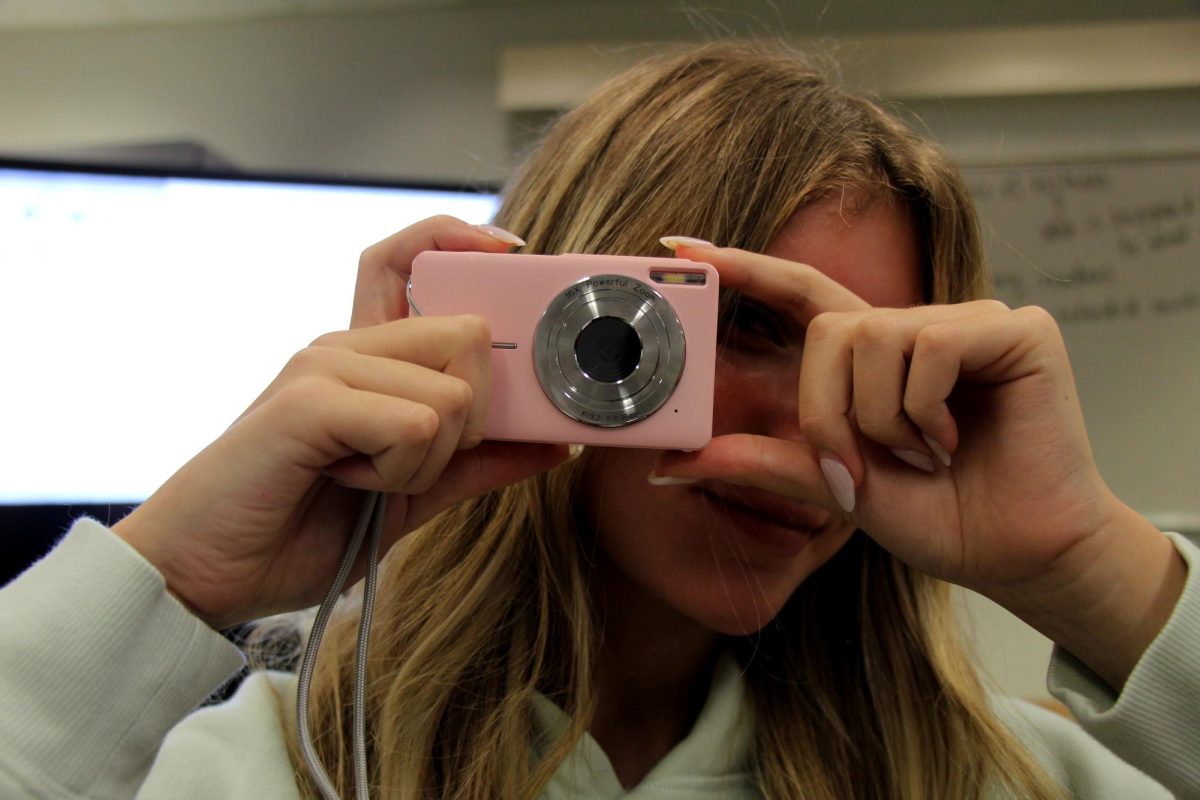As social media usage grows, and platforms such as Instagram and TikTok spread idealized beauty standards, the pressure for adolescents to conform to a certain look has increased. Due to these societal expectations, young people turn to unhealthy methods to reach an unrealistically thin body, including students at Marjory Stoneman Douglas High School. This wave of pressure has affected adolescents rapidly, with alarming statistics indicating that 50% of teenage girls and 30% of teenage boys use unhealthy weight control behaviors.
Social media has been a catalyst for eating disorders; the resurgence of the 90’s skinny ideal and pro-anorexia Tumblr blogs has been facilitated by platforms such as TikTok and Instagram. Societal pressure continues to push these unrealistic beauty standards; this is evident in trends like using weight-loss drugs, such as Ozempic. As teenagers idolize those participating in such trends, they internalize the idea that they must emulate their appearances.
Online communities have been exacerbating the unrealistic beauty standards social media has been spurring. These communities serve as forums for young people to share tips to worsen eating disorder behaviors. Users often encourage one another with “tricks” to eat less, maintain a small figure and look like certain celebrities.
“I’ve been in one of these communities on X that are showing stuff that is very alarming,” sophomore Laura Maurer said. “Some of the things they say are almost like advertisements, saying things like ‘this workout made my arms skinnier’ and stuff like that.”
These forums also consist of less harmful habits; on some, teenagers share their personal experiences with eating disorders and how they struggle.
While explicit content on social media promoting these disorders may be harder to find, subtle messaging continues. The National Eating Disorder Association briefly analyzed weight-loss advertising and found that about 40% of all advertising for weight-loss products made use of false, unsubstantiated claims and 93% contained one or more deceptive statements. These posts include diet plans, calorie counting and fitness content. It does not explicitly promote destructive habits; however, it can be viewed by impressionable teens.
As social media usage grows and these platforms promote idealized beauty standards, the pressure on adolescents to conform to certain appearances grows as well. Influenced by societal expectations of beauty, many young people turn to unhealthy methods in their quest for an unrealistically thin body, highlighting a concerning trend in pursuit of an idealized appearance.
Social media is marketed as a platform for sharing everyday life, yet content like daily gym vlogs and “What I Eat in a Day” videos often romanticize unhealthy standards. Adolescents struggle to recognize the filtered and curated content, leading them to replicate lifestyles that are unrealistic.
“In my own personal experience, seeing posts talking about how little certain people eat used to make me feel fatter in a way, even though that maybe wasn’t true,” sophomore Jaelyn Griffis said. “Posts like these would make me feel like eating breakfast or lunch would automatically make me gain 30 pounds.”
As social media continues to change, so do influencers, who seem to be prioritizing clicks over anything else. Following the algorithm, they inadvertently promote content that reinforces harmful beauty ideals. The more users interact with posts showing thin figures and extreme dieting tips, the more similar content they are likely to see it.
This creates a cycle where adolescents are repeatedly exposed to unrealistic body images and extreme standards for beauty. Some MSD students concur that exposure to these topics can significantly affect self-esteem, leading many young teens to feel unhappy with their bodies and compelled to alter their appearance, sometimes resorting to dangerous measures.
“I follow a lot of these fitness influencers and whenever I see their posts I can’t help but compare myself to them,” sophomore Sofia Teran said. “I feel like all their posts are so hard to recreate, like going to the gym everyday while eating literally nothing.”
The glamorization of fitness influencers can contribute to the misconception that health is synonymous with thinness. Many influencers present their seemingly perfect lives containing clean eating and everyday fitness, without showing the potential mental health repercussions of these lifestyles. The lack of transparency can lead to unrealistic expectations among young followers, who may not realize that these influencers often engage in extreme measures to maintain their appearances.
Consequently, the constant romanization of these lifestyles can distort teens’ understanding of what it means to be healthy, oftentimes allowing habits that equate worth with physical appearance.
It has become apparent that eating disorder content is easily accessible; users of social media platforms can come across it without actively searching it out. Scrolling on TikTok, it is not uncommon to see a body checking video, meal inspiration videos containing a meek amount of food or “thinspo” content.
“X vs. TikTok is much more apparent with the content, X people specifically talk about their weight and bodies, while TikTok is more subtle, leaving you questioning if it was actually a video related to eating disorder,” senior Sara Calderon said. “It’s not uncommon to encounter a pretty girl moving to the side to show her flat stomach or how skinny she is; this always made me feel worse about myself in the past.”
The psychological effects of this content can lead to a quest for validation, resulting in a detrimental focus on appearance that overshadows crucial aspects of health and growth. Adolescents can become obsessed with calorie counts, workout routines and constant comparisons to idealized images, fostering unhealthy habits that exacerbate feelings of inadequacy.
The relentless pursuit of an unattainable body compromises students’ physical health as well as their mental well-being.











![National Honor Society Sponsor Lauren Saccomanno watches guest speaker Albert Price speak to NHS members. National Honor Society held their monthly meeting with Price on Monday, Nov. 4. "[Volunteering] varies on the years and the month, but we have started a couple new things; one of our officers Grace started a soccer program," Saccomanno said. "We have been able to continue older programs, too, like tutoring at Riverglades. NHS's goal is to have as many service projects as possible."](https://eagleeye.news/wp-content/uploads/2024/11/xNOeKNVwu7aErpVyJHrHogagZUUcLLosjtbIat94-1200x900.jpg)

![Ice Ice Baby. Skating to "Waltz" and "Romance" during her long program, figure skater Ava Zubik competes at the Cranberry Open in Massachusetts on Aug. 12, 2022. She scored a total of 86.90 on her short and free skate program, earning fifth place overall. "I try to make it [competing] as fun and enjoyable as I can because it's my senior year, and so I want to really enjoy competitive figure skating while it lasts," Zubik said.](https://eagleeye.news/wp-content/uploads/2024/11/skater1-799x1200.jpg)
